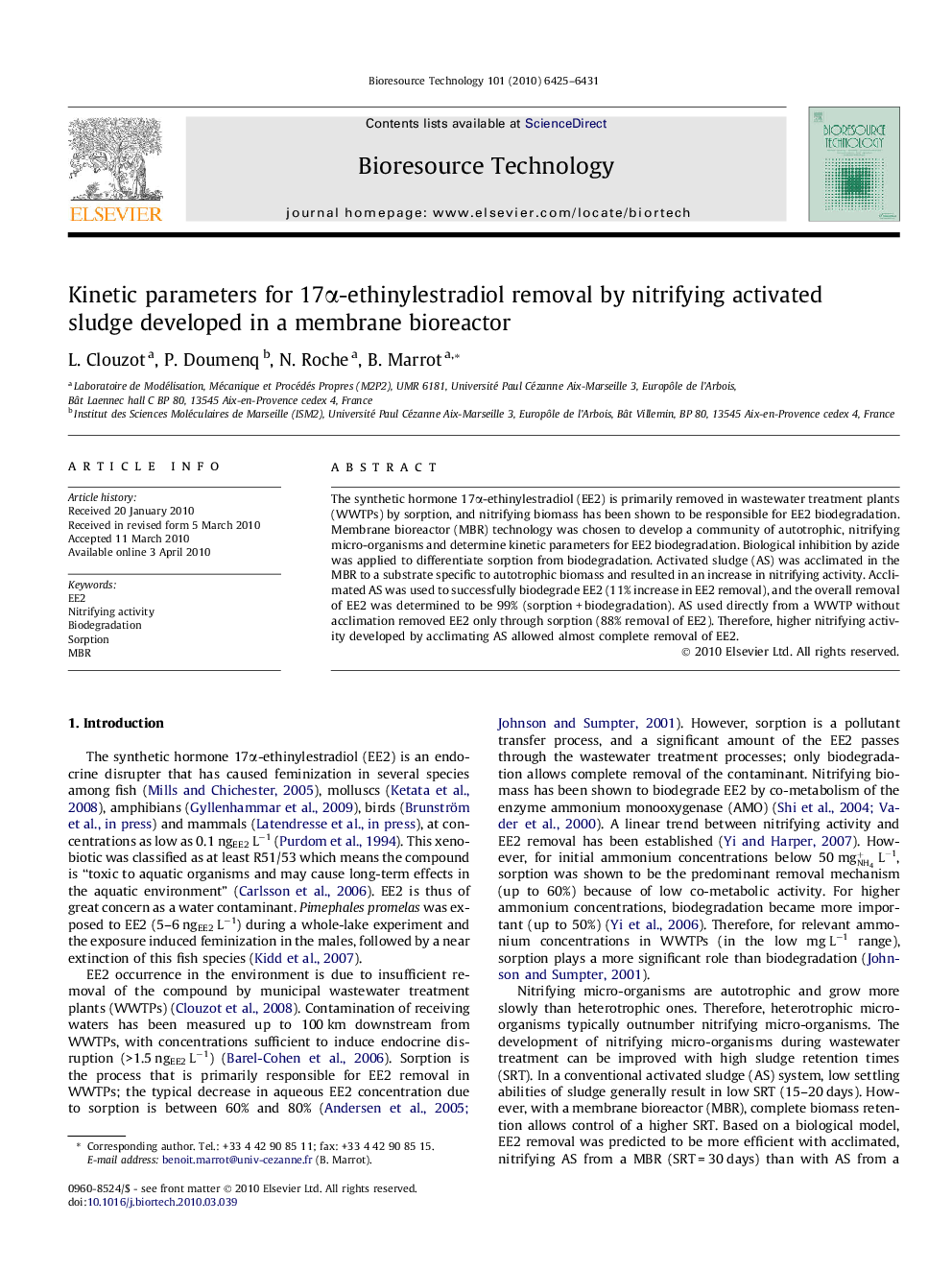| Article ID | Journal | Published Year | Pages | File Type |
|---|---|---|---|---|
| 683213 | Bioresource Technology | 2010 | 7 Pages |
The synthetic hormone 17α-ethinylestradiol (EE2) is primarily removed in wastewater treatment plants (WWTPs) by sorption, and nitrifying biomass has been shown to be responsible for EE2 biodegradation. Membrane bioreactor (MBR) technology was chosen to develop a community of autotrophic, nitrifying micro-organisms and determine kinetic parameters for EE2 biodegradation. Biological inhibition by azide was applied to differentiate sorption from biodegradation. Activated sludge (AS) was acclimated in the MBR to a substrate specific to autotrophic biomass and resulted in an increase in nitrifying activity. Acclimated AS was used to successfully biodegrade EE2 (11% increase in EE2 removal), and the overall removal of EE2 was determined to be 99% (sorption + biodegradation). AS used directly from a WWTP without acclimation removed EE2 only through sorption (88% removal of EE2). Therefore, higher nitrifying activity developed by acclimating AS allowed almost complete removal of EE2.
